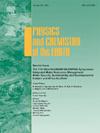马尔达城市增长与环境影响评价:基于Shannon熵和遥感的综合研究
IF 3
3区 地球科学
Q2 GEOSCIENCES, MULTIDISCIPLINARY
引用次数: 0
摘要
城市化带来了巨大的环境和生态挑战,在城市发展和生态保护之间取得平衡至关重要,以造福子孙后代。利用地理空间分析方法,对1990 - 2020年马尔达城市群城市化的时空变化及其环境影响进行了研究。将卫星衍生指数、归一化差异建筑指数(NDBI)、归一化差异植被指数(NDVI)和地表温度(LST)与野外数据相结合,评估城市化趋势及其生态后果。采用Shannon熵模型对研究期间的空中城市增长进行了评价。1990年的相对熵值为0.751,2000年、2010年和2020年的相对熵值分别为0.814、0.882和0.947,表明MUA地区城市化速度较快,城市扩张速度是基准年1990年的4倍以上。本研究从不同的角度来评估城市扩张对环境的影响。线性回归(LR)模型表明,English Bazar、Old Malda和MUA的人口增长与建成区增长之间存在显著相关性,R2分别为0.927、0.989和0.982。LR模型还揭示了快速城市化对环境条件(NDBI、LST和植被覆盖)的显著影响。因此,本研究利用地理空间技术展示了城市化的影响,可以帮助决策者规划可持续发展(sdg),并有效缓解城市规划和管理挑战,以实现可持续的城市环境。本文章由计算机程序翻译,如有差异,请以英文原文为准。

Urban growth and environmental impact assessment in Malda: A comprehensive study using Shannon's entropy and remote sensing
Urbanization poses enormous environmental and ecological challenges, making it crucial to strike a balance between urban growth and ecological preservation for the benefit of future generations. This study assesses the spatiotemporal changes and Environmental Impacts of Urbanization (EIU) in the Malda Urban Agglomeration (MUA) areas between 1990 and 2020 using geospatial techniques. Satellite-derived indices, Normalized Difference Built-up Index (NDBI), Normalized Difference Vegetation Index (NDVI), and Land Surface Temperature (LST)—were combined with field-based data to evaluate urbanization trends and their ecological consequences. Shannon's entropy model was employed to assess aerial urban growth during the study period. The relative entropy values were 0.751 in 1990 and 0.814, 0.882, and 0.947 in 2000, 2010, and 2020, respectively, indicating rapid urbanization in the MUA region, where the growth rate of urban expansion was found to be more than four times from the base year, 1990. This study took a different perspective to assess the impacts of urban expansion on environmental effects. The linear regression (LR) model demonstrated a substantial association between population growth and an increase in built-up areas in English Bazar, Old Malda, and MUA, with R2 values of 0.927, 0.989, and 0.982, respectively. The LR model also revealed that rapid urbanization has significantly impacted environmental conditions (NDBI, LST, and vegetation cover) in the study. Thus, this study demonstrates the impacts of urbanization using Geospatial techniques, which can help policymakers plan for sustainable development (SDGs) and effectively mitigate urban planning and management challenges for a sustainable city environment.
求助全文
通过发布文献求助,成功后即可免费获取论文全文。
去求助
来源期刊

Physics and Chemistry of the Earth
地学-地球科学综合
CiteScore
5.40
自引率
2.70%
发文量
176
审稿时长
31.6 weeks
期刊介绍:
Physics and Chemistry of the Earth is an international interdisciplinary journal for the rapid publication of collections of refereed communications in separate thematic issues, either stemming from scientific meetings, or, especially compiled for the occasion. There is no restriction on the length of articles published in the journal. Physics and Chemistry of the Earth incorporates the separate Parts A, B and C which existed until the end of 2001.
Please note: the Editors are unable to consider submissions that are not invited or linked to a thematic issue. Please do not submit unsolicited papers.
The journal covers the following subject areas:
-Solid Earth and Geodesy:
(geology, geochemistry, tectonophysics, seismology, volcanology, palaeomagnetism and rock magnetism, electromagnetism and potential fields, marine and environmental geosciences as well as geodesy).
-Hydrology, Oceans and Atmosphere:
(hydrology and water resources research, engineering and management, oceanography and oceanic chemistry, shelf, sea, lake and river sciences, meteorology and atmospheric sciences incl. chemistry as well as climatology and glaciology).
-Solar-Terrestrial and Planetary Science:
(solar, heliospheric and solar-planetary sciences, geology, geophysics and atmospheric sciences of planets, satellites and small bodies as well as cosmochemistry and exobiology).
 求助内容:
求助内容: 应助结果提醒方式:
应助结果提醒方式:


